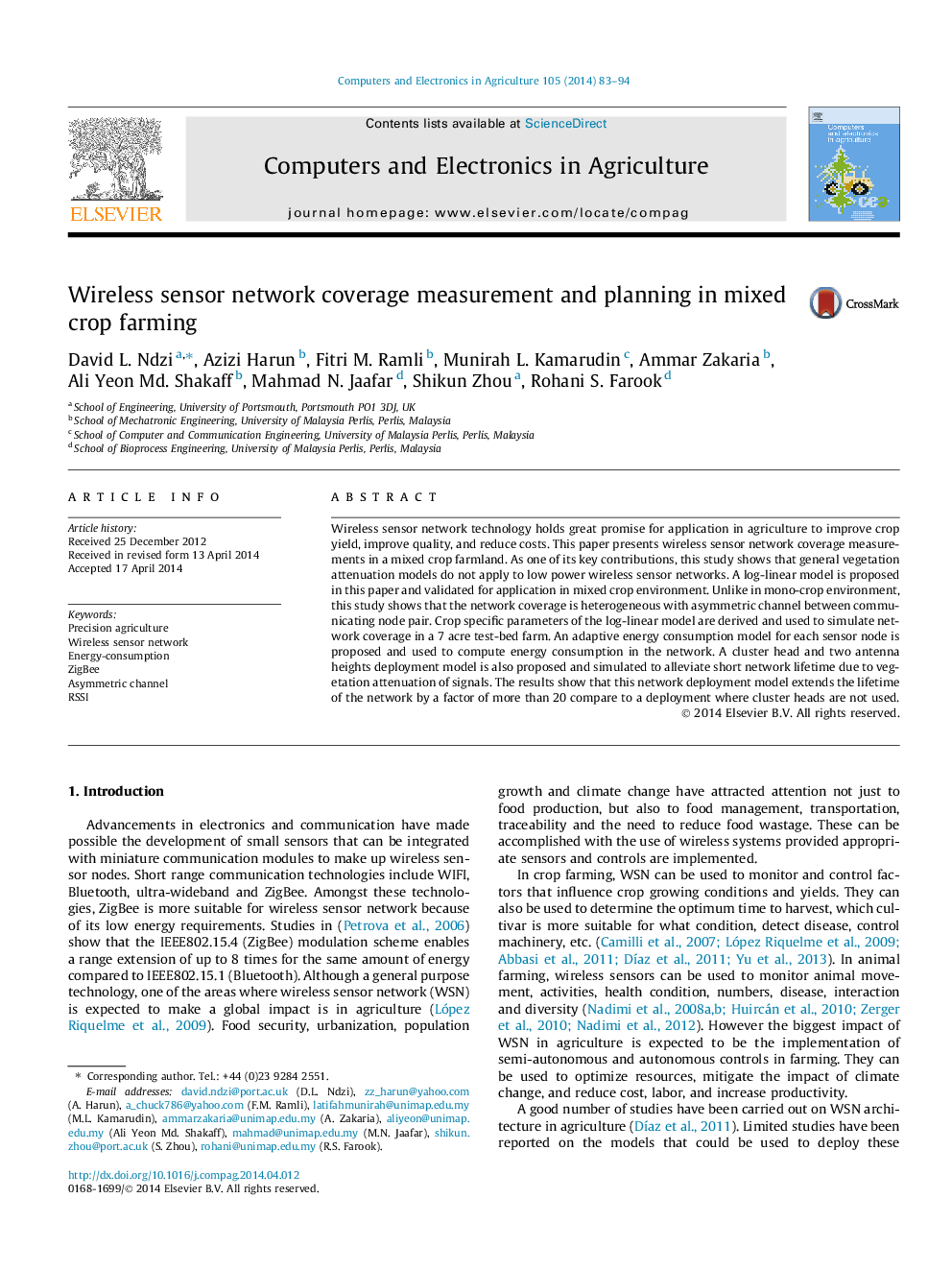| Article ID | Journal | Published Year | Pages | File Type |
|---|---|---|---|---|
| 84291 | Computers and Electronics in Agriculture | 2014 | 12 Pages |
•We measure Wireless Sensor Network (WSN) signal propagation in a mixed crop farm.•General vegetation attenuation models should not be used to plan WSN in crop farms.•The channel between nodes in two plots with different crops is asymmetrical.•Cluster heads should be used when deploying WSN in agricultural environments.
Wireless sensor network technology holds great promise for application in agriculture to improve crop yield, improve quality, and reduce costs. This paper presents wireless sensor network coverage measurements in a mixed crop farmland. As one of its key contributions, this study shows that general vegetation attenuation models do not apply to low power wireless sensor networks. A log-linear model is proposed in this paper and validated for application in mixed crop environment. Unlike in mono-crop environment, this study shows that the network coverage is heterogeneous with asymmetric channel between communicating node pair. Crop specific parameters of the log-linear model are derived and used to simulate network coverage in a 7 acre test-bed farm. An adaptive energy consumption model for each sensor node is proposed and used to compute energy consumption in the network. A cluster head and two antenna heights deployment model is also proposed and simulated to alleviate short network lifetime due to vegetation attenuation of signals. The results show that this network deployment model extends the lifetime of the network by a factor of more than 20 compare to a deployment where cluster heads are not used.
